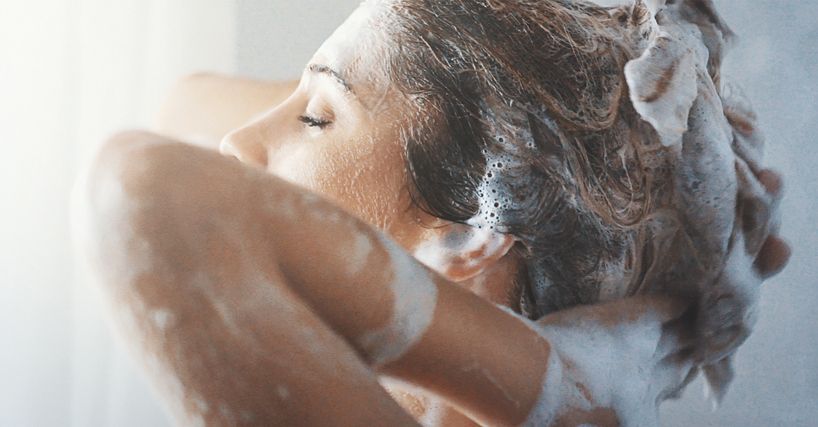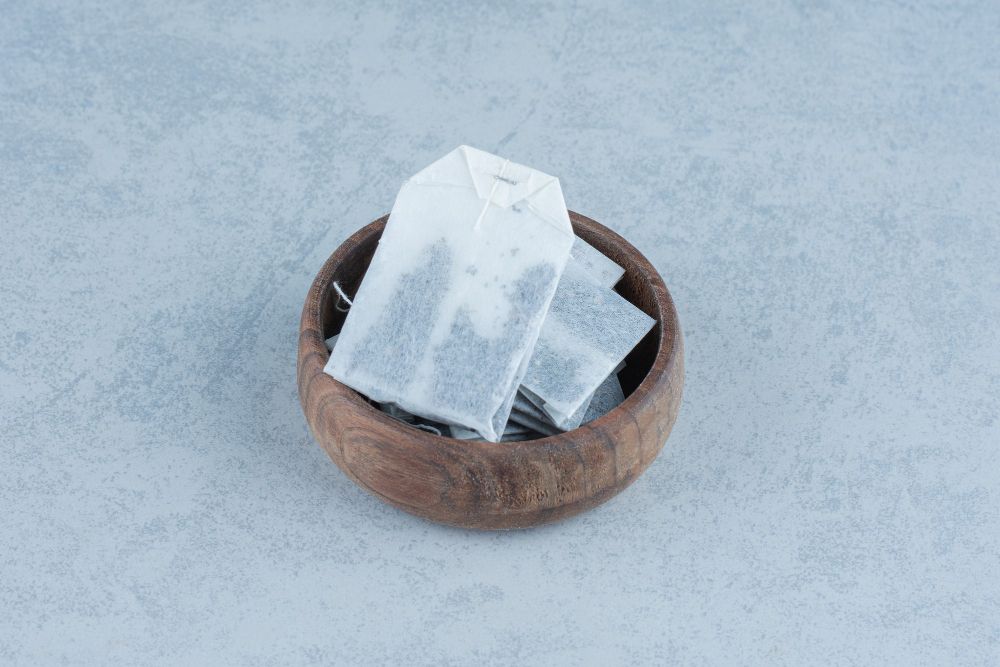

Book Now to Experience
F8 Hair Regrowth Treatment
1 Minute Self-Registration
Date should not be before minimal date
Author: Leila Tan|Updated: 23 July 2024
Jada Pinkett Smith has always been a trendsetter, and her decision to shave her head is no exception. She owns a production firm with her husband, Will Smith, and has produced films, documentaries, and television programmes. As a producer for the Broadway musical Fela!, she was nominated for a Tony Award for Best Musical in 2010. In 2021, Jada's decision to have a shaved head was motivated by something much more profound than a simple aesthetic preference; she wanted to reflect her newfound freedom and complete independence from society's expectations.

1
Jada Pinkett Smith's Bold Hairstyle Decision: Why & How It Happened
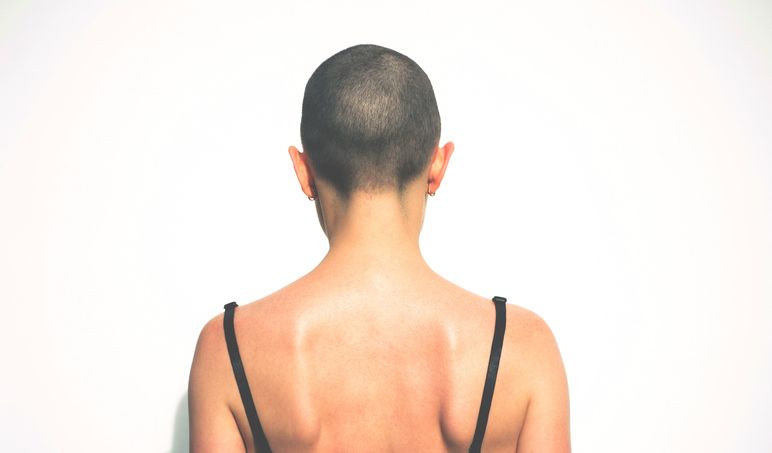
For Jada, shaving her head was about embracing who she is and being comfortable in her own skin, not just about aesthetics.
In an April 2018 Instagram post, she stated, "I did it as a means of regaining control. My personal journey has been about regaining my voice, authority, and strength. Therefore I adopted this appearance as a statement of my independence." Her decision not only inspired her admirers to follow suit, but also spurred a bigger discussion on self-acceptance and empowerment, which are strongly ingrained in Jada's spirit and personality. In addition, going bald was viewed as a way for Jada to demonstrate the strength of women regardless of what society deems attractive or conventional beauty standards.
Overall, Jada Pinkett Smith's courageous decision to shave her head has not only inspired many others, but it also serves as a reminder of how powerful women can be when they make such bold choices.


2
Another Reason Behind Pinkett Smith's Shaved Head

Having Will Smith slapped Chris Rock during the Oscar ceremony on March 27 caused a stir in various media. The comedian Chris Rock joked about Pinkett's bald head and that her looks are no longer a personal preference. However, Pinkett Smith shared her own alopecia isata story during a Facebook Watch episode on June 1, in an interview.
Recently, Jada Pinkett Smith disclosed that she is experiencing hair loss, which has left her feeling ashamed and vulnerable. In 2018, the actress, best known for her roles in films such as The Matrix, Ali, and Girls Trip, noticed she was losing significant clumps of hair. In an interview with Red Table Talk, Pinkett Smith explained that stress was the reason for her hair loss. She claimed that the stress of parenting two adolescent children and maintaining a prominent career had taken a physical toll on her.
In addition, Pinkett Smith revealed that she had stopped taking care of herself by not sleeping enough or eating healthy foods. Instead, she relied on caffeine to get through her long, work- and family-filled days and nights. Her hairline likely receded dramatically over a short period of time due to a combination of elevated stress levels and bad food decisions. Due to the burden on her mental health, Pinkett Smith also began experiencing anxiety attacks and other psychological disorders in addition to this physical symptom. She believes that it took her some time to identify the underlying causes of her hair loss and make the necessary adjustments.
Since then, Pinkett Smith has made it a mission to take better care of herself by ensuring she gets sufficient sleep each night and eating a balanced diet rich in fresh fruits and vegetables. She also incorporates yoga into her daily regimen as a means of de-stressing after hard days at work or at home. In the future, Pinkett Smith expects both her physical and mental health to improve as a result of her continued adoption of these lifestyle modifications.
Read More

3
Alopecia Areata: The Autoimmune Condition
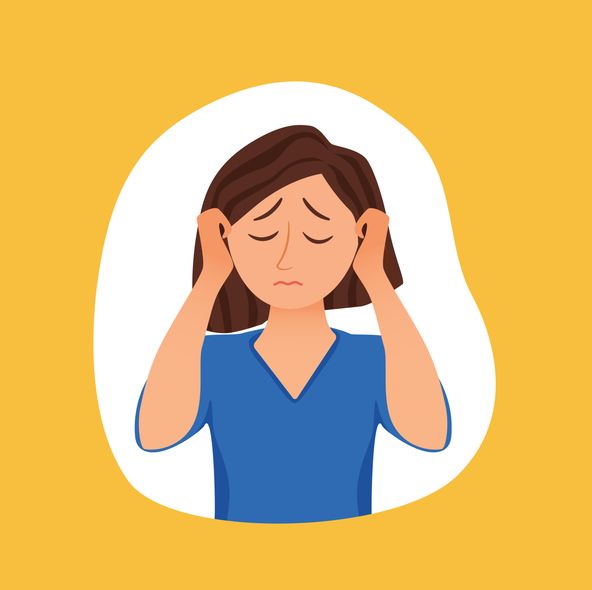
It's great to see Pinkett Smith has a great way of coping with her own difficulties, but there are still a lot of people that is not aware of what is Alopecia Areata despite she has generously shared on Red Table Talk. This is actually an autoimmune disorder characterised by bald patches of hair loss on the scalp or other parts of the body.
It occurs when the immune system decides to attack hair follicles, resulting in hair loss. While hair loss can occur everywhere on the body, this condition most commonly affects the head and face, and is estimated to affect around 6.8 million people in the United States, with women being just as likely as men to be affected. Symptoms can range from small, coin-sized bald patches to total hair loss on the scalp and elsewhere. Jada Pinkett Smith has revealed that she is one of the millions who are living with this condition.
Possible Symptoms
Although the signs and symptoms of alopecia areata might differ from person to person, hair loss in patches is the most typical symptom. Bald spots on the scalp, face, or other parts of the body can result from this condition. Hair thinning, hairs that are unusually short and look like they were cut, and a fullness in the area where hair was lost are also possible signs. Hair loss might be accompanied by itching or burning in the affected areas. Complete baldness, including the loss of eyebrows and eyelashes, has been reported in extreme cases.


4
What Causes This Autoimmune Disease?

Alopecia Areata which is from the Alopecia family, is believed to result from a combination of genetic and environmental factors, although research into its causation is ongoing. It is thought that certain genes may predispose individual to develop this type of autoimmune condition, while triggers such as stress, trauma, infections, or hormone imbalances may also play a role in its onset. In Pinkett Smith’s case, it appears that intense stress resulting from her high-profile career combined with poor dietary choices and lack of sleep were likely key contributors to her hair loss.
Types of Alopecia Areata:
Patchy alopecia areata is one, numerous, or conjoined (reticular) patches of hair loss. Alopecia totalis is the total or near-whole loss of scalp hair, whereas alopecia universalis is the whole or almost total loss of hair on all hairy body surfaces.
Asides from that, we have alopecia incognita, which is characterised by diffuse complete hair loss with a positive pull test, yellow spots, and short, shrunken regrowing hairs, but no involvement of the nails. Ophiasis refers to hair loss in a band-like pattern around the circumference of the head, specifically at the temporal and occipital bone borders.
Sisaipho refers to the widespread alopecia except at the scalp's periphery. Lastly, the Marie Antoinette syndrome (also known as canities subita): Acute bout of widespread alopecia with rapid "overnight" greying and loss of pigmented hair.

Book Now to Experience
F8 Hair Regrowth Treatment
1 Minute Self-Registration
Date should not be before minimal date

5
Does Alopecia Cause Permanent Hair Loss?
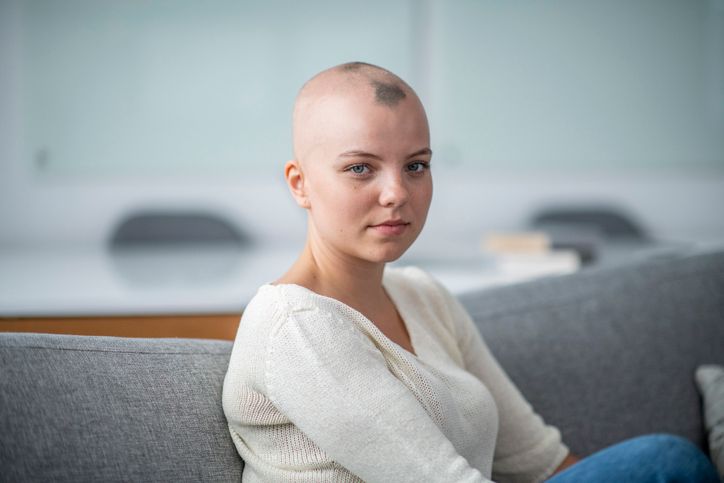
Most of the time, alopecia doesn't cause permanent hair loss. Since hair loss and growth happen in different places, the hair looks uneven. There are as many as 6.8 million people in the U.S. who have it. Most of the time, alopecia areata shows up as small bald patches on the scalp or elsewhere. In extreme cases, it can also cause hair loss all over the body or even make a person completely bald.
This type of alopecia can be genetic, but it can also be caused by things like long-term stress, injury, hormonal changes, or infections. Even though there isn't a cure for it yet, treatments can help ease the symptoms and help new, healthy hair follicles grow. If you or someone you care about has this illness, don't give up. With the right care and therapy, most types of patchy Alopecia Areata can get better over time without hurting hair follicles or leaving scars on the scalp.
For now, there is no one sure way to treat or cure Alopecia Areata. On the other hand, many people say that over time, their symptoms go away on their own. Some patients have had success with using topical steroids and light therapy to reduce inflammation and encourage the growth of new, healthy hair follicles. Changing your lifestyle in ways like getting rid of emotional stress and eating a healthy diet full of fresh fruits and vegetables may help ease symptoms. At the end of the day, Pinkett Smith's story is a powerful reminder that we need to invest in our health in all areas if we want to do well now and in the future.


6
What You Can Do to Deal with Losing Your Hair

It takes time for healthy hair to grow back, so don't give up if you don't see results after one treatment. For hair to grow back, people often need long-term plans that are tailored to their own needs.
Injectable steroids are another common method to treat the condition. They could be used to treat small bald spots. Over and over, a steroid solution is injected into the scalp. The steroid keeps follicles from being attacked by the immune system. This treatment might make the hair grow back after about four weeks. The person may need to go back to counselling every few months. Hair growth can be both long-term and short-term.
Topical steroid preparations (like lotions and balms) and oral tablets are also often used for the treatment. Doctors will give them to a lot of people with alopecia areata, even though we don't know what their long-term effects will be. There are, however, some problems, such as diabetes, stomach problems, itching, and sometimes hair growing back in other places. The longer a treatment is given, the more likely it is that bad things will happen as a result.
Immunotherapy has been the best way to stop hair from falling out. Diphencyprone (DPCP) is put on skin without hair once a week in doses that get stronger over time. People who react have their hair grow back after about three months. There could be an allergic reaction, moderate eczema or dermatitis, or a severe skin reaction. If you can, slow down the rate of dose increases. In rare cases, a child may get vitiligo or patches that are too dark. Hair loss can continue even after treatment is done.
Alopecia areata can be treated with both natural and commercial drugs, but not all of them have a permanent or long-lasting effect on hair growth and scalp health. At F8 Hair Regrowth Therapy at New Beauty Singapore, we use low-level laser light to increase blood flow in the scalp's capillaries. This makes hair stronger and thicker!

7
Hair Me Out: The Recommended Method To Rescue Your Losing Hair
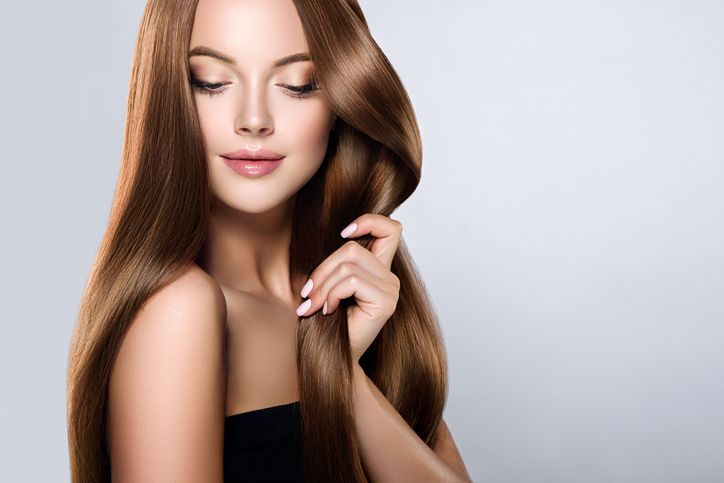
Like Jada Pinkett Smith did with her own treatment, you may be able to reduce the symptoms of your hair loss condition if you detect it early and choose the right strategy. Yet, not all therapies have an impressive success rate. The F8 Hair Regrowth Treatment is a fantastic alternative for those in need of a noninvasive hair regeneration treatment that does not involve surgery or external medications. Using a 200-magnification lens, our in-house therapist examines the growth of your hair to determine the source of your thinning hair. This noninvasive treatment for hair loss addresses not just hair loss symptoms, but also the underlying cause of excessive hair loss.
The F8 Hair Regrowth Treatment is a non-invasive treatment for hair loss that uses low-intensity laser light and moisturising serum to encourage follicle growth and maintain scalp health. The laser light emitted by the F8 Hair Regrowth Treatment stimulates blood flow, which supplies essential nutrients for optimal hair follicle growth.
The moisturising serum utilised in the F8 Hair Regrowth Treatment maintains sebum production in the scalp, unclogs follicles, and improves the scalp's condition. In addition, the serum hydrates the scalp, thereby minimising dandruff and irritation. This hair restoration treatment also balances the water-sebum ratio on the scalp to prevent an oily scalp, which inhibits healthy hair development.
The F8 Hair Regrowth Treatment is not a solution for alopecia areata or its subtypes, but it is capable of reducing alopecia areata symptoms after a few sessions; nonetheless, you will need to consult with our specialists to gain a better understanding of the treatment and to notice the positive results.


8
Conclusion

No matter how bad it is, taking care of yourself should be your top priority when dealing with thinning hair, since doing so can benefit you in both the short and long term. A nutritious diet rich in nutrient-dense foods helps maintain healthy skin and scalp from the inside out, while stress-relieving exercises like yoga or meditation can help reduce inflammation associated with autoimmune diseases, resulting in lower shedding and improved regrowth.
In addition, getting enough sleep and selecting the right treatment is crucial to help your hair regrowth when you experience hair loss. Make an appointment now to own stronger, thicker, and healthier hair!
FAQ
Is Will Smith's wife Jada Pinkett Smith a guest on Red Table Talk show?
No, Pinkett Smith is the co-host. She got a Daytime Emmy Award for her role as co-host of the Facebook Watch chat show Red Table Talk. In 2021, Time ranked her among the 100 most important individuals in the world.
What are the common autoimmune diseases?
The first is Type 1 diabetes. The pancreas makes insulin, a hormone that helps control how much sugar is in the blood. In type 1 diabetes, the immune system attacks and kills cells in the pancreas that make insulin. Blood vessels and organs, like the heart, kidneys, eyes, and nerves, can be hurt by high blood sugar. People also often get psoriasis and psoriatic arthritis. This is because skin cells grow and then fall off when they are no longer needed. With psoriasis, skin cells grow and divide too quickly. When the extra cells pile up, they cause red, inflamed patches that often have silver-white plaque scales on lighter skin. Psoriasis can look purple or dark brown with grey scales if it is on darker skin.
Is the F8 Hair Regrowth Treatment suitable for those with delicate scalps?
The F8 Hair Regrowth Treatment is appropriate for people with sensitive scalps. This scalp-safe hair regrowth treatment combines low-level laser light with a moisturising serum of medical grade.
How many F8 Hair Regrowth Therapy sessions will I need to observe an improvement in hair regrowth?
Each treatment plan is completed within three to six months, depending on the severity of hair loss and the state of the individual's scalp and hair.
What should I do following the procedure?
Drink sufficient water to increase your metabolism and blood flow. You may shower and shampoo as usual. Nonetheless, extreme water temperatures must be avoided.

Book Now to Experience
F8 Hair Regrowth Treatment
1 Minute Self-Registration
Date should not be before minimal date
Recommended Articles
COPYRIGHT© NEW BEAUTY MANAGEMENT LIMITED 2025. ALL RIGHT RESERVED.

